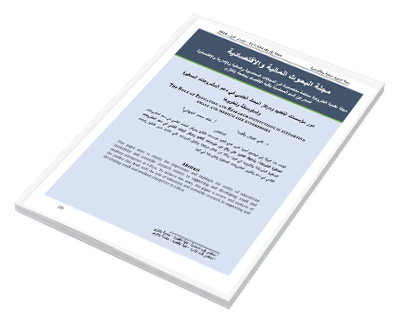Measuring the extent to which faculty members in Libyan universties accept the use of distance teaching techniques, using the Technology Acceptance Model (TAM)
DOI:
https://doi.org/10.37376/jofer.vi6.849Abstract
One of the most important criteria for the success of using distance teaching techniques is the satisfaction and acceptance of its users to it. Accordingly, measuring satisfaction rates is not just to identify the interaction between the provided technologies and their users, but to look in-depth at some of the behavioral factors that affect the extent to which these users accept these technologies. According to the impact of these factors, the organizations that provide and support these technologies determine the amount and rates of their use and the amount of spending on them. The aim of this research is to measure the extent to which faculty members in Libyan universities accept the use of distance teaching techniques. To achieve this, a set of behavioral factors such as perceived ease of use and perceived usefulness of use were relied on. These and other factors may also be linked to other external factors such as technical support and individual differences between the beneficiaries. The research population consists of faculty members working in Libyan universities. 330 questionnaire sheets were selected out of 385 as a representative sample, and the distributed questionnaire included various factors to measure the extent to which faculty members accept distance teaching techniques. And to test the hypotheses of the research, the program (Smart PLS-SEM) was used. The results of the research confirmed that technical support has a direct effect only on perceived ease of use and has no effect on perceived usefulness nor on attitudes towards technology. The most important finding of the research as the main result is that the faculty members participating in the study, despite their awareness of the ease and usefulness of using distance teaching techniques, may become reluctant to use these techniques because of a set of obstacles that constitute a barrier between them and the use of distance teaching techniques.
Key words: Distance Teaching; Technology acceptability model; Distance teaching techniques.
Downloads





